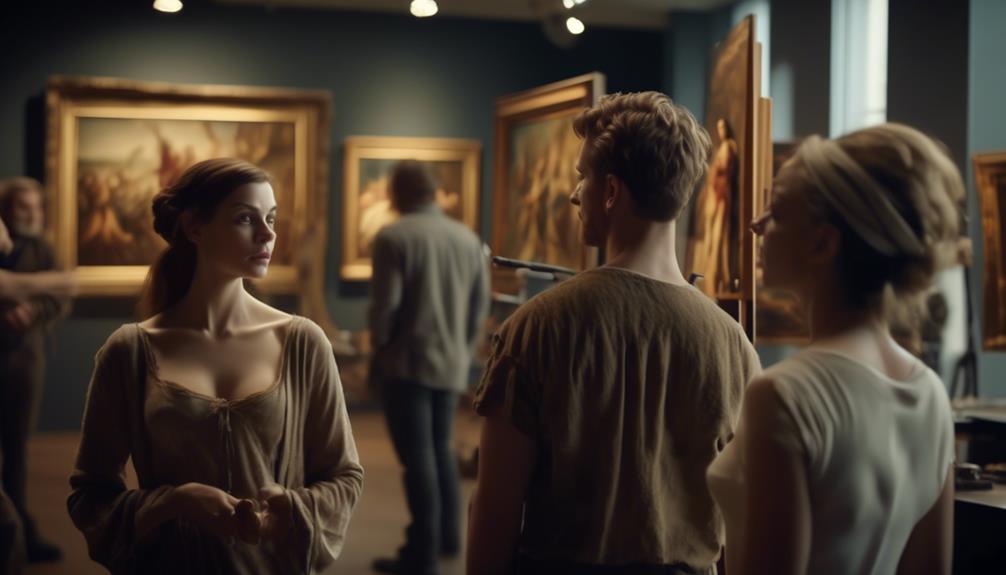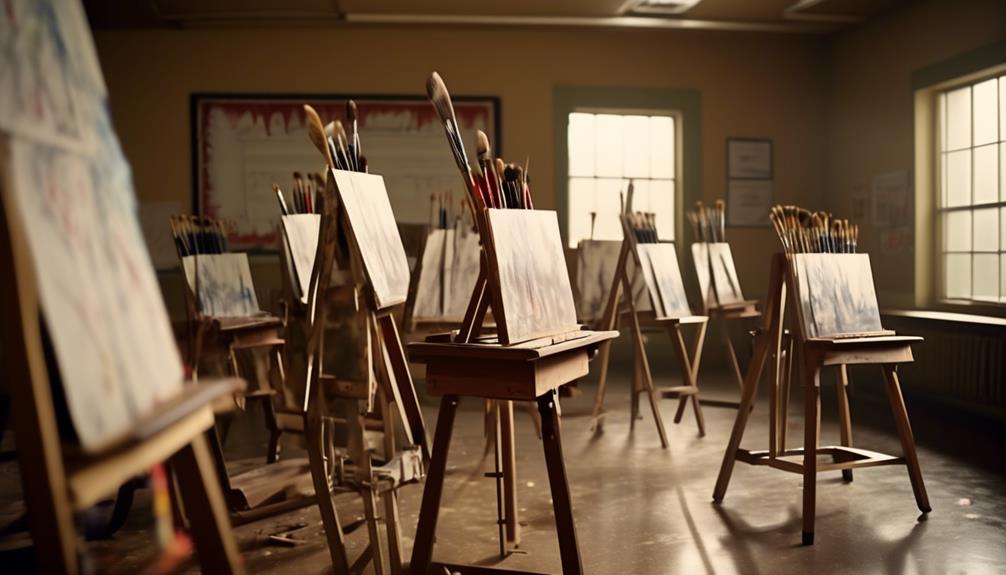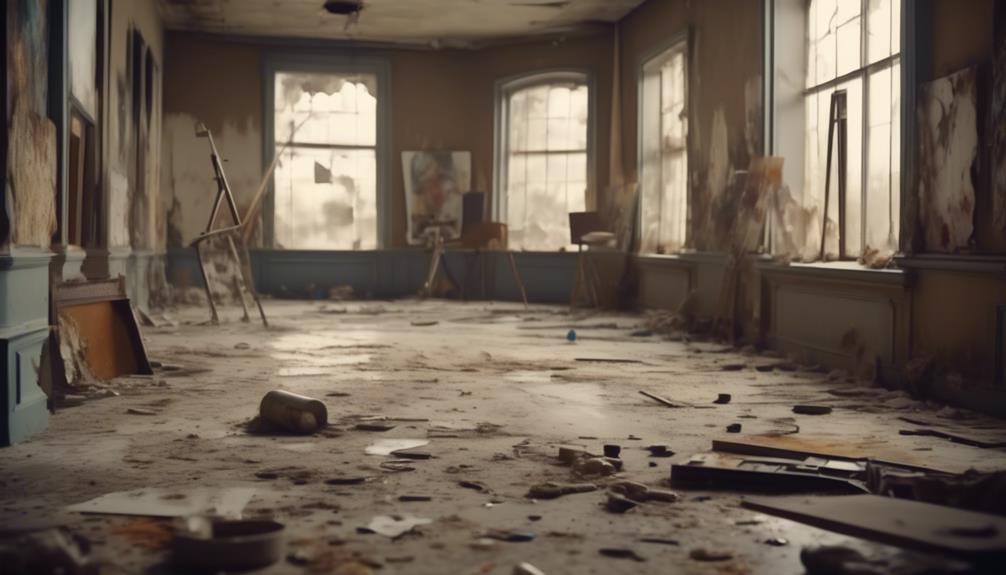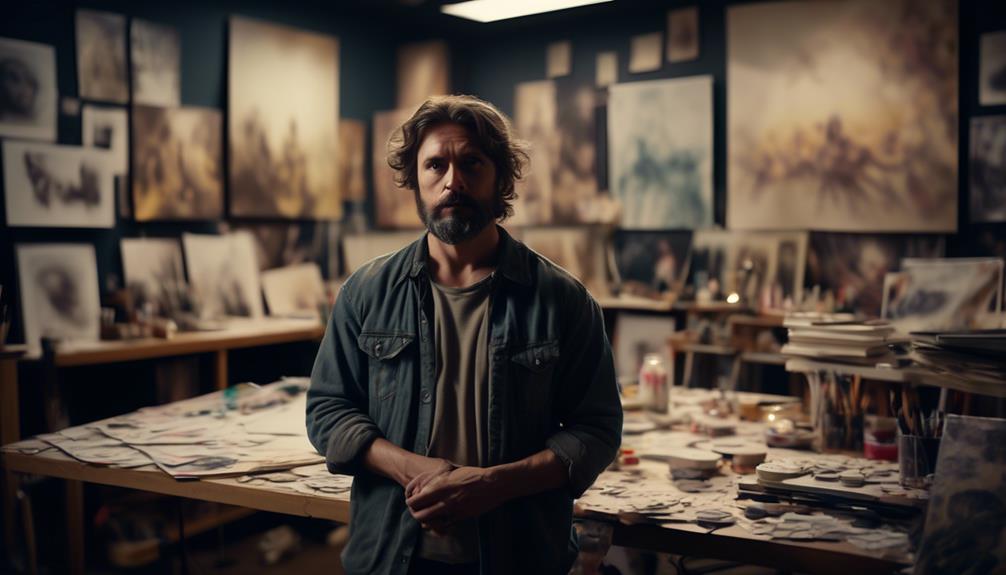Have you noticed how many schools have been cutting their fine arts programs in recent years? It’s a troubling trend that has led to a decline in exposure to traditional art forms among younger generations. But what’s causing this shift, and what are the broader implications for society as a whole? Let’s explore the complex factors that have contributed to the abandonment of fine arts and consider how this shift reflects larger societal changes.
Table of Contents
ToggleHistorical Shifts in Art Perception

As you delve into the historical shifts in art perception, you’ll find that the evolving perspectives have deeply influenced the way art is understood and appreciated. In the ancient world, art was often seen as a reflection of divine inspiration, with artists considered as channels for higher powers. The Renaissance period brought about a shift, placing emphasis on humanism and the portrayal of everyday life. This marked a significant departure from the religious and mythological themes that dominated earlier art forms. Moving into the 19th and 20th centuries, the industrial revolution and technological advancements prompted artists to explore new forms of expression, leading to movements such as Impressionism, Cubism, and Surrealism. These shifts challenged traditional notions of art, pushing boundaries and prompting viewers to question their preconceptions. The tumultuous events of the 20th century, including world wars and social upheaval, further influenced art, with artists using their work to confront and reflect the changing realities of the world. These historical shifts in art perception have shaped the way we engage with and interpret art, underscoring its dynamic and evolving nature.
Impact of Digital Media
With the rise of digital media, the landscape of fine arts has undergone a profound transformation, redefining the ways in which art is created, consumed, and shared. The accessibility of digital tools has democratized the creation process, allowing individuals from diverse backgrounds to explore and express their artistic visions. As a result, the art world has seen an influx of new voices and perspectives, enriching the overall creative discourse.
Digital media has also revolutionized the way art is consumed and shared. Online platforms and social media have become virtual galleries, providing an expansive reach for artists to showcase their work to global audiences. This has facilitated greater visibility for emerging artists and enabled art enthusiasts to discover and engage with a wide array of artistic content.
Moreover, the interactive nature of digital media has blurred the boundaries between creator and audience, fostering new forms of collaborative and participatory art experiences. From virtual reality installations to interactive digital exhibitions, technology has opened up innovative avenues for immersive artistic engagement.
Decline in Arts Education Funding

You might have noticed a concerning trend in recent years: a decline in funding for arts education. This decline is alarming for several reasons:
- Impact on Access: Reduced funding means fewer resources for arts programs in schools, leading to limited access for students who may have a passion for the arts but lack the means to pursue it outside of school.
- Diminished Quality: With budget cuts, schools are forced to scale back on art classes, materials, and specialized instructors, impacting the quality of arts education provided to students.
- Negative Impact on Creativity: Arts education fosters creativity, critical thinking, and problem-solving skills. Reduced funding for arts education deprives students of the opportunity to develop these essential skills.
- Economic Impact: The decline in arts education funding could have long-term economic repercussions. The arts industry contributes significantly to the economy, and by neglecting arts education, we may hinder the development of future artists, designers, and creative professionals, impacting the economy as a whole.
The decline in arts education funding poses a threat to the holistic development of students and the cultural and economic landscape of society.
Changing Cultural Priorities
The shift in cultural priorities has sparked debates about the allocation of resources for arts education. In today’s fast-paced world, cultural priorities have shifted towards technology, business, and STEM fields. As a result, funding for fine arts programs in schools and community organizations has dwindled. The emphasis on practical, job-oriented skills has led to a decreased emphasis on the importance of arts and creativity in society. This shift in priorities has significant implications for the future of fine arts, as it impacts the opportunities available for aspiring artists and the overall cultural landscape.
With changing cultural priorities, there is a risk of undervaluing the role of fine arts in society. The focus on immediate practicality often overshadows the long-term benefits of a thriving arts community. It is essential to recognize the inherent value of fine arts in fostering creativity, critical thinking, and emotional intelligence. By neglecting the arts, society may inadvertently limit the potential for innovation and expression.
In order to address these shifting priorities, it is crucial to advocate for the inclusion of fine arts in educational curriculums and to promote the value of arts in enriching cultural experiences. Embracing a balanced approach that values both practical skills and artistic expression can lead to a more vibrant and dynamic society.
Diminished Patronage and Support

You’ve likely noticed the impact of funding cuts on the arts, with many programs and organizations struggling to maintain their activities. Alongside this, there has been a noticeable decline in sponsorships for art events and exhibitions, making it increasingly challenging for artists and institutions to sustain their work. Additionally, the lack of public interest in fine arts has further exacerbated the issue, leading to diminished patronage and support for the arts.
Funding Cuts Impact
Amid funding cuts, the fine arts community faces a significant decline in patronage and support, posing a threat to the preservation and advancement of artistic endeavors. This decline is evident in various ways:
- Reduced Accessibility: Funding cuts lead to higher ticket prices for performances and exhibitions, making them less accessible to the general public.
- Limited Educational Opportunities: Schools and community programs are forced to reduce or eliminate fine arts education, depriving students of valuable creative outlets.
- Diminished Cultural Offerings: With decreased funding, cultural institutions struggle to maintain diverse and enriching artistic programs, impacting the overall cultural landscape.
- Strained Artist Support: Funding cuts result in fewer grants and resources for artists, hindering their ability to create and showcase their work, ultimately limiting their contribution to society.
Decline in Sponsorships
As funding for the fine arts continues to dwindle, the support and patronage from sponsors and donors have significantly declined, posing a critical threat to the sustainability of artistic endeavors. The decreased sponsorships have led to a domino effect, impacting the ability of artists and art organizations to create, exhibit, and promote their work. Without adequate financial backing, many art projects struggle to come to fruition, and emerging artists find it increasingly challenging to establish themselves in the industry. The decline in sponsorships has also hindered the accessibility of fine arts to the public, as fewer resources are available for educational programs and community outreach initiatives. Without a reversal in this trend, the fine arts risk further marginalization and diminished cultural impact. It is imperative for individuals and organizations to recognize the importance of robust sponsorships in preserving and promoting the fine arts.
Lack of Public Interest
Despite the rich cultural heritage and undeniable value of the fine arts, there appears to be a diminishing patronage and support from the public, raising concerns about the future of artistic endeavors. This lack of public interest is evident in several ways:
- Decreased Attendance: Art galleries, museums, and theater performances are experiencing dwindling foot traffic, indicating a waning interest in fine arts among the public.
- Reduced Funding: Public funding for fine arts programs and institutions has been declining, reflecting a shift in priorities away from supporting artistic endeavors.
- Limited Engagement: Fewer individuals are actively participating in fine arts-related activities such as workshops, classes, and community events, indicating a lack of engagement with the arts.
- Declining Sales: The market for fine art pieces has seen a decline, with fewer individuals investing in or purchasing artwork, signaling a lack of consumer interest.
Economic Pressures on Artists

Artists often face significant economic pressures as they pursue their creative endeavors, navigating a challenging landscape where financial stability is hard to come by. The following table illustrates some of the key economic pressures that artists commonly encounter:
| Economic Pressures | Description | Impact |
|---|---|---|
| Financial Instability | Inconsistent income streams due to irregular project-based work or freelance opportunities. | Difficulty in meeting basic living expenses and lack of long-term financial security. |
| High Cost of Materials | Art supplies, studio space, and equipment can be expensive, making it challenging for artists to afford necessary resources. | Limits artistic freedom and creativity due to financial constraints. |
| Limited Access to Funding | Difficulty in securing grants, scholarships, or sponsorships to support artistic projects or education. | Reduced opportunities for career development, education, and professional growth. |
| Market Volatility | Fluctuations in art market demand and pricing, making it challenging for artists to predict and stabilize their income. | Unpredictable income and reduced financial stability. |
| Lack of Benefits | Limited access to healthcare, retirement plans, and other employee benefits typically provided in traditional jobs. | Financial insecurity and lack of support for personal and professional well-being. |
These economic pressures can significantly impact an artist’s ability to sustain a career in the fine arts, often leading to financial stress and instability.
Reimagining the Role of Fine Arts
Navigating economic pressures in the fine arts industry necessitates reimagining the role of fine arts to foster sustainability and growth for artists. As the landscape of the arts continues to evolve, it’s crucial to adapt and innovate. Here are some key areas for reimagining the role of fine arts:
- Community Engagement: Encouraging active participation and dialogue within local communities can revitalize the arts. By involving the public in artistic processes and discussions, the value of fine arts can be emphasized and appreciated.
- Technology Integration: Leveraging technology can expand the reach of fine arts, making it more accessible to a broader audience. Virtual exhibitions, online galleries, and digital art platforms can create new opportunities for artists to showcase their work and connect with patrons.
- Entrepreneurial Skills Development: Equipping artists with business acumen and entrepreneurial skills is essential for their sustainability. Empowering artists to navigate the business side of the industry can lead to greater financial stability and independence.
- Education and Advocacy: Investing in arts education and advocacy efforts is crucial for nurturing the next generation of artists and fostering a greater appreciation for the value of fine arts in society. By advocating for the importance of fine arts, we can ensure its continued relevance and impact.



